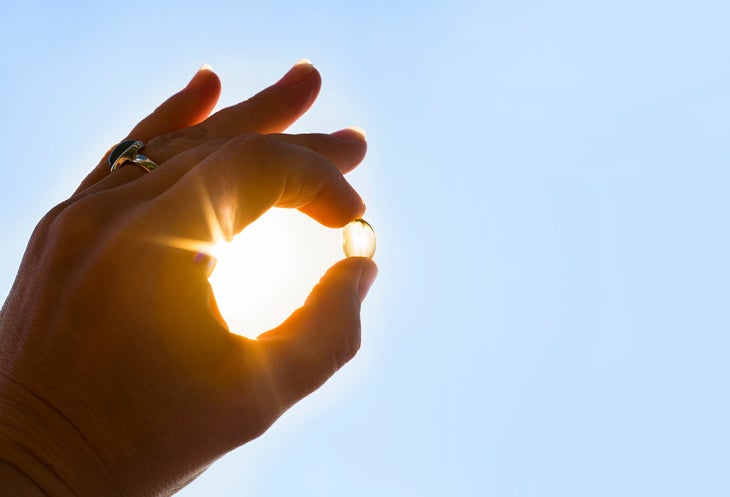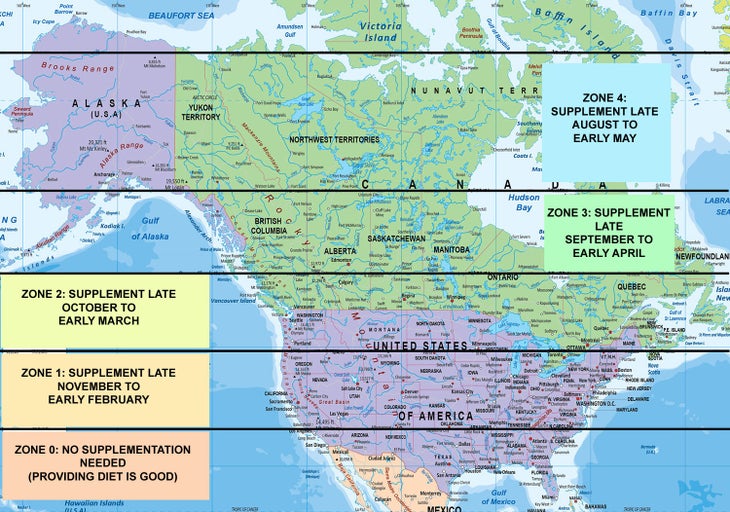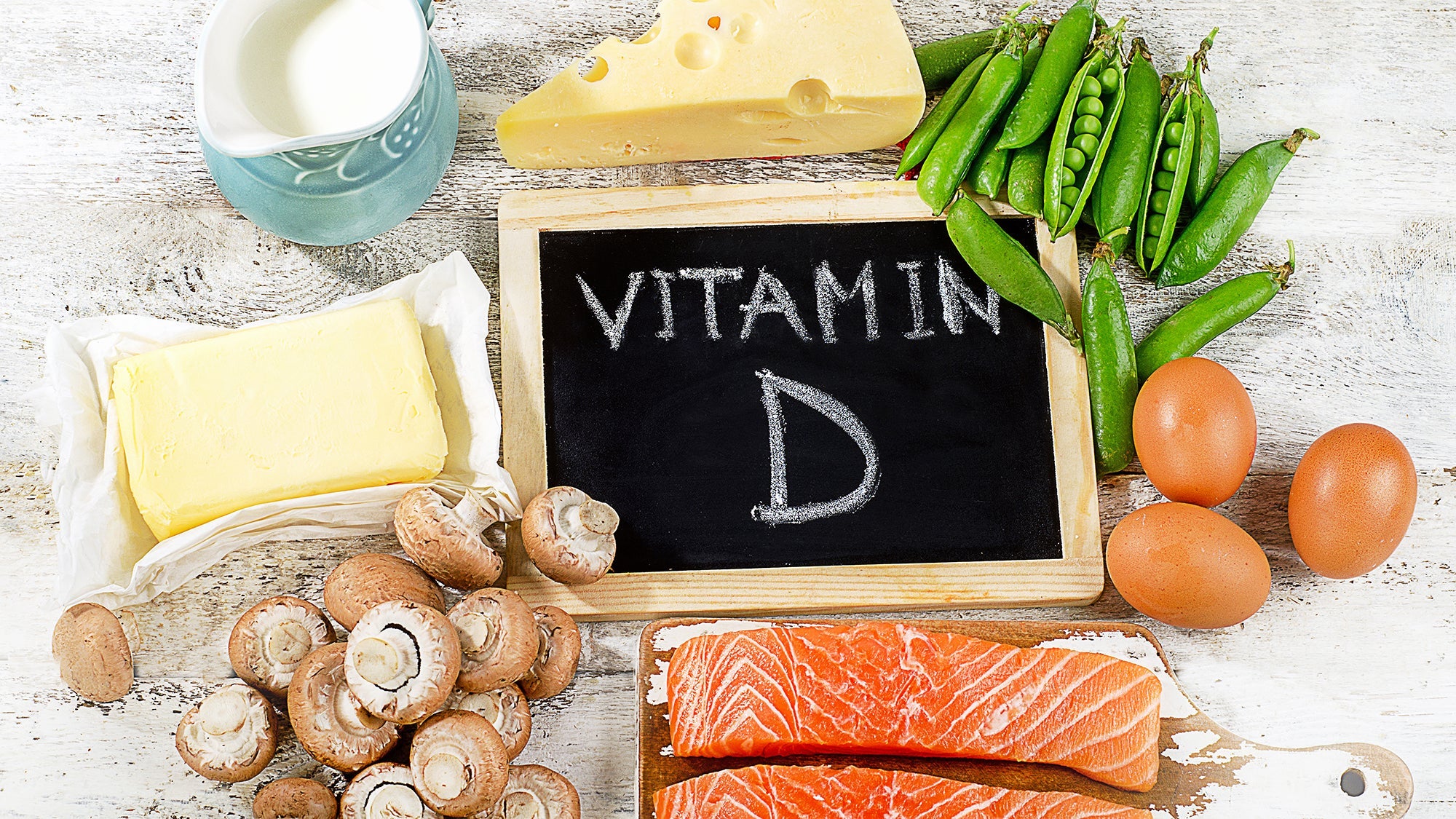Research has found that optimum intakes of vitamin D in adults provide significant protection from degenerative illnesses such as heart disease, multiple sclerosis and a number of different cancers. Runners in hard training, however, have other very good reasons why your vitamin D intake matters—not just for health, but for performance too.
Why Do Runners Need Vitamin D?
Stay Healthy
A growing body of evidence suggests not only that sub-optimum vitamin D status harms immunity, but also that boosting vitamin D intake improves immunity. For example, when scientists studied 225 endurance athletes over the winter period, they found that a significantly higher proportion of those who were vitamin D ‘deficient’ came down with an upper respiratory tract infection (URTI – coughs, colds, sore throats, etc.) and suffered worse symptoms than those in the ‘optimal’ status group. Another study found that supplementing 5000IUs per day with vitamin D₃ for four weeks during the winter boosted immune function and reduced the incidence and severity of URTIs in taekwondo athletes. Other recent studies have provided strong evidence that 1) poor vitamin D status is linked to a higher incidence of URTIs and that 2) increasing vitamin intake, especially over the winter period, reduces the incidence and severity of URTIs.
Avoid Stress Fractures and Muscle Injuries
Vitamin D is needed for the formation of strong, healthy bones, and research clearly shows that sub-optimum intakes of vitamin D can greatly increase the risk of stress fracture in runners. There’s also good evidence that a poor vitamin D status increases the risk of muscle and other soft tissue injuries in athletes—particularly in the lower limbs and core muscles.
Improve Power and Strength
Some research suggests that performance might be improved in runners with an optimum vitamin D status, and that higher intakes of vitamin D can improve some power and strength measures in athletes. However, the evidence on performance is somewhat patchier, and some studies have found no benefits.
Why We Go Short of Vitamin D
Numerous studies have shown that vitamin D insufficiency or outright deficiency is rife, even in the affluent West. The situation is no better when it comes to runners; studies on athletes from the UK, US, Australia, Scandinavia and the Middle East have all found high rates of vitamin D insufficiency or even out-and-out deficiency. Why are so many people—including athletes—sub-optimum in vitamin D?
- Our diets have relatively few vitamin D rich foods, which means it’s easy to go short.
- Indoor lifestyles combined with advice to avoid the sun and cover up reduces the opportunity for vitamin D synthesis in the skin when exposed to strong sunlight.

Vitamin D Status and Sunshine
Vitamin D is an essential nutrient, belonging to a group of fat-soluble steroid-like compounds of which there are two major forms: Vitamin D2 and vitamin D3. Vitamin D3 is the most active form in the body and is produced in the skin after exposure to UVB (ultraviolet) rays from the sun.
The role of sunshine in ensuring optimum vitamin D status cannot be overstated. In the summer months, sunlight exposure is an incredibly efficient way of supplying vitamin D. With just ¼ of the body’s skin exposed (eg wearing a T-shirt and shorts), the average fair-skinned person can synthesise enough vitamin D for a day with just six minutes exposure to the midday sun!
The UVB content in sunlight is a function of season and latitude, however. During the winter months in the northern states, there is very little UVB in sunlight—even on the brightest winter’s day. And the further north you live, the fewer months there are with useful UVB.
In southern Florida, vitamin D synthesis is possible all year round, while in Seattle, it’s possible only from March to October. In Alaska, you can only get vitamin D from sunlight between early May and late August. This explains why a lot of athletes enter the winter period with an adequate vitamin D status, but by the mid-late winter period, many have become sub-optimum or even outright deficient.

Vitamin D and Diet
In the diet, vitamin D can be only be found naturally in a small range of foods. These include oily fish (such as salmon, trout and sardines), eggs, milk (which is fortified) and some meats. By contrast, vegetables, fruits, grains, cereals, nuts and seeds contain very little vitamin D. The US National Institute for Health (NIH) recommends a dietary vitamin D intake of 600 international units (IUs) per day. However, dietary needs are strongly influenced by your exposure to sunlight.
Some Good Sources of Vitamin D
| Food | Serving size | Vitamin D content (IU) |
| Milk and milk substitutes | ||
| Milk (fortified) | 1 cup | 120 |
| Soy milk, fortified with vitamin D | 250mL (1 cup) | 88 |
| Yogurt, fortified with vitamin D | 175g (3/4 cup) | 58-71 |
| Meat and eggs | ||
| Egg, yolk, cooked | 2 large | 57-88 |
| Beef liver, cooked | 75g (2 ½ oz) | 36 |
| Fish and Seafood | ||
| Salmon, red, canned | 75g (2 ½ oz) | 530-699 |
| Salmon, Atlantic, raw or cooked | 75g (2 ½ oz) | 342 |
| Mackerel, canned | 75g (2 ½ oz) | 219 |
| Trout, cooked | 75g (2 ½ oz) | 150-210 |
| Sardines, canned | 75g (2 ½ oz) | 144 |
| Fats and oils | ||
| Cod liver oil | 5mL (1 tsp) | 427 |
| Margarine | 5mL (1 tsp) | 25 |
Source: USDA and “Canadian Nutrient File 2010”
How Can I Ensure My Vitamin Intake is Sufficient?
- Try to consume plenty of vitamin D-rich foods (oily fish, eggs and vitamin D-fortified produce) at all times of the year.
- Use the ‘sunshine zone’ map above to determine when vitamin D supplementation should be considered.
- To confirm your vitamin D status, considered getting it checked—either through your physician or using a home blood-testing kit.
- If your blood level is below 75nmol/L, consider supplementing with 1000-2000IU of vitamin D3 (not D2) per day until your status is improved—regardless of season.
- During the summer months, try to regularly expose your skin to some strong sunshine for 5–15 minutes before covering up or applying sunscreen/sun block. Regular sun exposure can help build up your body’s vitamin D stores in readiness for the winter months ahead.
- Consider a winter break nearer to the equator to boost your flagging vitamin D levels.


